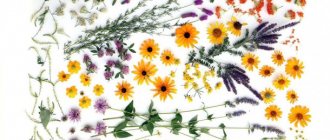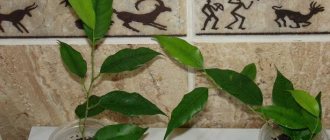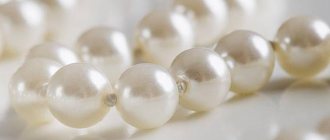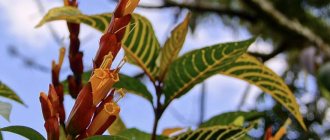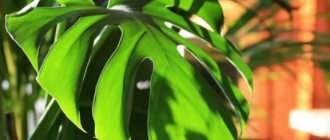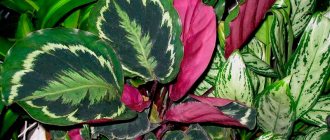Basic care
The distinctive ability of pandanus is its adaptability to a wide variety of environmental conditions. In nature, screw palms settle along the shores of seas, lakes and rivers, in swampy lowlands, on coral reefs, along the slopes and edges of the craters of dormant volcanoes. In indoor conditions, exotic also feels quite comfortable and needs minimal care:
- In spring and summer, the miracle palm tree is watered with soft water heated to 35 °C every 2–3 days, and half an hour after the procedure, excess water is drained from the pan. In the fall, watering is gradually reduced and the soil under the plant is moistened as the surface layer dries out. But! Under no circumstances should the earthen compandanus dry out completely.
- From the end of April to September, the tree is fed twice a month with a solution of complete mineral fertilizer for decorative deciduous crops. In autumn and winter, pandanus rests and does not need additional nutrition.
- The screw palm requires high ambient humidity, but it is recommended to spray not the plant itself, but the air around it, since water that gets into the leaf sinuses can provoke the development of fungal diseases. For hygiene purposes, the leaves of the plant are wiped monthly with a damp cloth.
- The room where the exotic grows should be regularly ventilated, but the pet must be reliably protected from drafts.
- Sometimes, although extremely rarely, potted pandanus forms aerial support roots. Under no circumstances should they be removed, otherwise the tree will simply lose stability and fall under its own weight. Cover the roots with damp moss and do not let it dry out, especially in the summer heat.
And further. To ensure that the crown of the tree is symmetrical, the pandanus pot is periodically rotated relative to the light source. The plant will survive the absence of this procedure painlessly, but will grow one-sided and unsightly.
Features of seasonal care
Helpful information:
- spring and summer are the period of awakening after winter rest, an active increase in the length of leaves, and in rare cases, flowering is possible. Good watering, lighting throughout, fertilization, propagation by children and cuttings are required. The optimal temperature is no less than +24 degrees and no more than +28°C. Humidity is 65–70%, spraying is useful in hot weather;
- autumn. Preparation for the dormant period, the growth of green mass gradually slows down, fertilizing is carried out only once a month (until the end of October). Watering is more moderate than in summer; with short daylight hours, additional lighting is useful. At average air temperatures, spraying is not required. In the second half of November, they look for a room for the plant where it will be cooler: at +18 degrees, not lower;
- winter. The evergreen species must rest. Without a period of rest, by spring the flower will not have enough strength to grow. It is important that at average temperatures there is no excess moisture in the soil and air: rotting and molding of the substrate and leaves begins. No fertilizing is carried out, watering is rare, moderate.
How to care for pandanus
Amaryllis care at home
The plant is unpretentious, so even an amateur grower can grow it.
Lighting
Light must reach the plant in the proper amount. If the pandanus is located near a south window, then you need to take care of partial shade. In winter, it is possible to install additional lighting for the plant at a distance of at least 60 centimeters.
Watering
In summer, provide the plant with abundant watering until a dry crust of the top layer of soil appears. In winter, it needs to be significantly reduced and watered a couple of days after the dry crust appears. Excessive drying out of the soil can negatively affect the condition of the plant.
Temperature
Pandanus at home can easily survive temperature changes in summer and winter. The optimal temperature for growing it is between 19 and 25 degrees. Too high a room temperature can cause pandanus leaves to turn yellow. If there is a low temperature, the leaves will dry out or even fall off.
Air humidity
Maintain moderate humidity levels. It is strictly forbidden to wash or spray the leaves. During this process, water enters the sinuses and the extensive root system begins to rot. It is allowed to occasionally wipe the plant with a light cloth, but be careful with the thorns so as not to harm yourself or the plant.
Top dressing
From the beginning of spring until the end of summer, it is necessary to provide the plant with regular feeding every 14 days. With the onset of winter, the process is carried out monthly.
Pandanus propagation
As a rule, pandanus propagation is carried out by children, which can be found on the trunk of the plant. The rosettes are separated from the parent plant when they reach 10 centimeters and placed in a container with water for the further rooting process. Be sure to use root growth stimulants. Naturally, this process takes a very long time.
Specific species can be propagated by seed. Seeds need to be sown after they are collected.
How to transplant pandanus?
When the root system has completely entwined the clod of earth, then the pandanus needs to be transplanted. As a rule, in adult specimens the procedure occurs once every 2 or even 3 annual cycles. Experts recommend carrying out the replanting procedure together with the old soil ball, due to the large size of the root system.
Pandanus in the house: signs and superstitions
The screw palm rarely causes negative opinions among fans of mysteries, secrets and unusual properties of plants. The longer the leaves, the more factors indicating positive energy in the home.
You should not believe omens and think that Pandanus is not growing well after a visit to the house of a person with the “evil eye”. Surely, the conditions for keeping the plant have been violated or the owner is carrying out agrotechnical measures incorrectly. It is necessary to adjust the care of the evergreen species, and the bush will once again delight the household with spectacular greenery and luxurious foliage.
The screw palm is a suitable indoor plant for fans of exotic tropical species. With good care, Pandanus will delight you with lush greenery and, even in the absence of flowers, will become the central element of the decor of any room.
Want to know more tips for growing Pandanus at home? Watch the video below:
Optimal growing conditions
Fatsia
The screw palm is not demanding. She needs no more attention than other plants. Let’s analyze in more detail the conditions under which the pandanus will be comfortable.
Location and lighting
There is an opinion that pandanus has very aggressive energy and makes people in the room angry. It is noted that the caustic energy of the flower contributes to the formation of wit. Therefore, it is not advisable to place it in the bedrooms and homes of sanguine people, but in classrooms, offices, work rooms and the abodes of weak-willed, weak-willed people, it will be very useful.
Because it prevents you from dozing off, enhances brain activity, and activates your performance. In addition, flower growers claim that the screw palm acts as a protector of the house, protecting it from other people's unnecessary energy.
The screw palm loves light, but not direct and burning rays of the sun, but gentle, diffused ones. Moreover, lighting should be plentiful all year round. In the off-season, direct ultraviolet radiation is more gentle and therefore completely harmless, but in the summer it can burn foliage. In hot weather, it is advisable to shade the windows using blinds or tulle. In winter, when there is little natural light, it is necessary to connect fluorescent lamps for 6-8 hours.
Important! From a scientific point of view, pandanus is completely harmless: it does not emit toxins, the foliage does not cause allergies and does not pose any threat to people. Botanists claim that the plant, on the contrary, cleanses the air of pathogenic microflora thanks to the essential oils found in its composition.
Temperature
Like all palm trees, pandanus love warmth. At home in the summer season, the optimal temperature for cultivating a flower is from 20 to 25°C. In hot weather, the permissible thermometer level is 30°C, but this is already the limit of the capabilities of a moisture-loving plant. Therefore, in this temperature regime, daily watering several times will be appropriate.
In winter, the screw palm will grow comfortably at +18°C. It is possible for the temperature to drop to 15°C, but in the cold there is a very high risk of destroying the crop.
Tips for caring for indoor pandanus flowers
The exoticism of the tropics is becoming more accessible and realistic, since caring for an indoor pandanus “palm” in familiar home conditions does not have complex requirements. The “accommodation” and unpretentiousness of such a green “pet” will allow you to bring a piece of African flavor into the interior with minimal effort. That is why an inexperienced gardener can safely purchase such a miracle of nature in a store and, using simple steps, minimal skills and knowledge, grow a healthy and luxurious plant.
Advice from experts in this field can become the main “guide” in the professional care of indoor decorative pandanus flowers.
Watering: the substrate should be constantly moist, but do not overdo it, since excess water can cause rotting of the rhizome. As a liquid for irrigating the soil, it is necessary to choose purified soft water, the temperature of which should not be lower than +30...+35°C. In winter, when all life processes slow down, it is important to reduce the amount and frequency of watering - once every 3-4 days.
Spraying and gently wiping them with a slightly damp cloth at least once every 1-2 weeks has a beneficial effect on the condition and growth of leaves. It is necessary to be careful with the axils of the leaves, since water entering them can adversely affect the general condition of the flower. You can increase soil moisture during the hot summer period using a tray in which you need to place wet moss, pebbles or expanded clay and place it under a pot with ornamental shrubs.
With the appearance of aerial roots, it is worth ensuring their integrity and protecting them from damage and drying out. It is recommended to “envelop” the root shoots in moistened moss to prevent them from drying out, changing it periodically.
Feeding: every week in summer, once every 4 weeks in winter. As a fertilizer for more effective care of your home exotic pandanus flower, you can purchase a ready-made mixture at a specialized flower shop.
If there is a lack of sunlight, it is worth using fluorescent lamps for about 8 hours a day, placing them at a distance of at least 70 cm above the plant.
Follow these tips, and caring for a spectacular pandanus flower in normal home conditions will become a pleasant and easy procedure. And most importantly, all your efforts will be rewarded with the glossy shine of dark green leaves that elegantly cover the sturdy trunk, creating a unique feeling of a tropical oasis.
Pandanus. Home care
Bougainvillea growing and care at home
How to care for pandanus at home. Pandanus: reproduction. Pandanus: transplant. Pandanus: cultivation. Conditions necessary for growing pandanus.
PANDANUS veitchii
Veitch's Pandanus, or Screw Tree (native to Polynesia), was described by a 19th century English botanist as a "majestic, beautiful plant." In order for the pandanus to look good, the room must be spacious enough. The sharp green, gracefully curved leaves of pandanus with cream, white or yellowish stripes along the edges are similar to pineapple leaves and reach 1 m in length. They grow around the central shoot, arranged in a spiral, which is reflected in the name of the plant.
What conditions are needed to grow pandanus?
Light: Pandanus needs good sunlight, but direct midday sun can damage the plant.
Temperature: in winter - not lower than 10 °C. The optimal temperature is about 15 °C. In summer, room temperature is sufficient, but at temperatures of 24 °C and above it is necessary to increase the humidity and ensure a constant flow of fresh air.
Watering: in summer, water the plant 2-3 times a week, in winter - every 10 days. In winter, when temperatures are close to minimum, keep the plant dry. Always check that there is no water left in the folds of the leaves, otherwise they will begin to rot. It is best to moisten the soil by pouring water into a tray.
Air humidity: in summer, spray the plant with lukewarm water once a week; at other times of the year, spray every 10-14 days. Place the pot in a tray of wet pebbles or gravel.
Feeding: during the growth period, in spring and summer, once every 2 weeks, feed the pandanus with fertilizers for indoor plants, diluted according to the manufacturer's recommendations.
Soil: a mixture of 4 parts fertile clay soil with 1 part peat.
Replanting: every spring. Pandanus grows best in small pots.
Appearance care: wipe the leaves with a sponge. You can use leaf cleansers every 3 weeks.
Pandanus. Features of care
Transfer. At 2-3 years of age, the plant forms aerial roots that reach the soil and lift it, as if on stilts.
Repot pandanus in the spring when it has many roots and new leaves are still small. First, water the plant thoroughly. Prepare a pot one size larger than the previous one with good drainage and fill it with a fresh mixture of clay soil and peat.
Turn the pot over while holding the base of the plant with your hand. Tap the pot with the edge of your hand and shake it out; plant along with soil. Shake the soil off the roots, being careful not to damage them. Place the plant in the center of the new pot, spreading the roots into the soil. Sprinkle the roots with the fresh mixture. When filling the pot with soil, leave 5 cm to the edge, not 2 cm as usual. In the fall, cover the aerial roots with soil.
Care errors and their elimination
Many housewives note that Pandanus grows well and rarely gets sick. Rotting or drying out of leaves is possible if recommendations for growing a tropical species are not followed.
There are other nuances that will be useful to amateur flower growers:
| Problem | Causes | Elimination |
| Leaves turn yellow and dry | Increased air dryness. Moisture deficiency, soil drying out | Wipe the leaves of the Screw Palm with a damp cloth and water the plant in time. |
| Rotting | Incorrect watering. No drainage holes. Dampness in the apartment. Overwatering during the rest season at moderate temperatures | Change the conditions of detention, normalize the water regime |
| Doesn't grow | Poor lighting. Failure to comply with the rest period, lack of vitality. Poor soil combined with infrequent fertilizing | Move the flowerpot closer to the light. From the end of November, create conditions for the correct course of the dormant period. Transplant Pandanus into soil of the correct composition, feed the plant as it should: a couple of times a month from spring to mid-autumn |
| Dry leaf tips | Moisture deficiency in soil and air. The plant is in the sun more than it should be | Move the flowerpot to an area with diffused light. Spray the flower more often in hot weather, wipe the leaves with a soft damp cloth |
Possible difficulties during cultivation
Improper agricultural practices often affect the external condition of the palm tree. Therefore, timely measures and prevention of common mistakes can save your palm tree from common problems.
Important! Dry lower leaves of a palm tree are a natural process of its development. But if it scares you with its abundance, add nutrients to the soil and replant the plant in the spring. A similar picture can also be observed when the plant is exposed to a draft
You can save the situation by spraying water from a spray bottle near the plant. Experienced housewives advise, as a preventive measure, to place the pot in a tray with damp expanded clay or forest moss, and also never open windows or balcony doors near the flower.
A similar picture can also be observed when the plant is exposed to a draft. You can save the situation by spraying water from a spray bottle near the plant. Experienced housewives advise, as a preventative measure, to place the pot in a tray with damp expanded clay or forest moss, and also never open windows or balcony doors near the flower.
This nuance is very important, since a lack of moisture is just as dangerous for pandanus as its excess. When water stagnates in the pot, favorable conditions are formed for the development of root rot. This problem can only be prevented by proper watering. In cases where the disease has already progressed, an urgent transplant will be required to remove all damaged parts of the root.
Important! You cannot cut off the aerial roots of pandanus - they supply the plant with moisture and provide additional support for the heavily overgrown palm-shaped cap.
Pandanus that lived in the garden in the summer can be affected by scale insects. You can notice parasites on the underside of the leaf along the central vein. If there are only a few insects, try collecting them by hand. Otherwise, you will need to spray with an insecticide (Aktara, Bi-58, Konfidor).
Learn about the propagation features of violets, streptocarpus, orchids, zamioculcas, dieffenbachia, cactus, shefflera, and laurel.
Reproduction methods
Generative cultivation of pandanus is carried out as follows:
- The seeds are scattered over the surface of a peat-sand substrate and covered with a layer of soil.
- The container with the crops is covered with glass and kept at a temperature of about +25 °C, opening the greenhouse daily for ventilation.
- After 15–25 days, when seedlings appear, the glass is removed and the seedlings are provided with soft lighting, warmth and moderate regular watering.
In the phase of 2–4 leaves, young pandanuses dive into separate pots filled with a mixture of sand, turf and leaf soil (1:1:1).
There are also vegetative methods of propagating the miracle palm tree:
- Cuttings. Cuttings 20–25 cm long are cut from the side shoots, the cuts are sprinkled with crushed coal and the material is planted for rooting in a mixture of peat and sand (1:1). The container with the cuttings is wrapped in a bag and an improvised greenhouse is placed on a light, warm windowsill. The plantings are ventilated daily and systematically watered through a sprayer. Rooting of cuttings takes 30–40 days.
- Dividing the bush. The daughter rosettes at the base of the trunk of an adult plant are covered with sphagnum moss and regularly moistened with warm water from a spray bottle. When the children form their own roots and grow up to 20 cm in height, they are separated from the mother palm tree and dried on the windowsill for 24 hours. After time, the rosettes are planted in damp sand under glass and kept at +22 °C. After 50–60 days, the plant is transplanted to a permanent place in a substrate for adult plants.
When propagating pandanus, the use of phytohormones is allowed, accelerating the process of root formation and stimulating plant development.
Reproduction methods
Pandanus has several methods of propagation at home. Dividing the bush and cuttings are especially popular among gardeners, and professionals experiment with seeds.
Dividing the bush
Perhaps this is the simplest technique that allows you to acquire a new sprout. It is done during transplantation of large specimens and consists of cutting off the young shoots that appear on the main trunk. For planting, take only strong, healthy sprouts with powerful roots. To root, they are first placed in a container with water, and after growing the root system, they are planted in a prepared substrate.
Cuttings
At home, the cutting method is less commonly practiced. To implement this, side shoots up to 20 cm long are cut from the pandanus. They are kept in water until roots appear, to which a growth stimulant can be added, and then planted in the ground.
Some experts do without water germination, but rather dry the sections for several hours and then deepen them into a peat-sand mixture. For better rooting, it is advisable to cover the container with the plant with polyethylene. Within two months, roots will appear on the cuttings.
Did you know? In the homeland of pandanus, their leaves are used to make linen.
Seeds
This method is practiced extremely rarely, since the likelihood of germination is low, and besides, it is a lot of hassle. In addition, in temperate climatic latitudes it is very difficult to obtain high-quality seed material.
Planting is carried out in peat tablets located in plastic cups. They are first watered until completely softened, then the seed is deepened into the substrate a few centimeters with a finger and covered on top with a plastic bag or an identical plastic container. After the emergence of seedlings, the shelter is removed and the shoots continue to germinate until a full-fledged rosette grows. Then it is transplanted into a separate pot.
Exotic pandanus looks very decorative and is completely unpretentious in care. It can survive the lack of moisture and light and the influence of central heating in winter without loss. In addition, the room is practically not affected by pests. The only drawback of this plant is the volume of the crown, which will need a lot of space, but you won’t have this problem in the next decade.
Types of domestic pandanus
Of the numerous 700 species, only a few are cultivated as indoor plants, and their varietal forms differ from plants in their natural habitat.
Household pandanuses are predominantly low, compact shrubs, often with variegated foliage and smooth leaf edges. They are undemanding in care, disease resistant and easy to reproduce.
The most famous indoor species is Veitch's pandanus (Pandanus veitchi). The leaves are long, grow spirally around a rigid stem and eventually reach a length of about 1 m.
Pandanus veitchi Variegated
They are usually green, but the low cultivar Pandanus Variegated series pleases with white and golden stripes on the foliage. Maximum height 1.5 meters.
Pandanus sanderi/baptistii is native to Indonesia. The leaves are 5-6 cm wide and 80 cm long. Young leaves are often light-colored, with white or red teeth along the edges. Adult specimens have characteristic yellow stripes along the entire leaf blade. In breeding you can find low varieties of the Variegated series.
Pandanus sanderi
Pandan (Pandanus utilis) from Madagascar. The leaves are green with a blue-gray coating and a reddish serrated edge. The length of the leaves in nature reaches 150 cm.
Pandanus utilis
In summer it tolerates direct sunlight. Does not form side shoots. In cultivation, the compact form with golden, variegated, non-serrate foliage is popular.
Pandanus species
Pandanus utilis (beneficial) This evergreen species can often be found in cultivated floriculture. The leaves of pandanus useful are juicy, bright green, directed upward, strewn with red thorns. In room conditions it can grow up to 2-3 m.
Pandanus utilis © Drew Avery
Panadanus sanderi (Sandera) An evergreen plant in the form of a tree with a short trunk. The leaves of this pandanus are long, about 80 cm. Yellow stripes can be seen along the entire length of the leaf, and the edges are framed by thorns.
Pandanus sanderi (Panadanus sanderi) © Yercaud-elango
Pandanus tectorius (Covering) Palm shrub with powerful aerial roots. The leaves are long, pointed with white spines. It blooms with large white flowers with a diameter of 6-10 cm. In nature it produces large fruits that are very pleasant to the taste.
Pandanus tectorius © Forest and Kim Starr
Pandanus veitchii (Veitch) A tree-like palm with a short trunk and actively emerging aerial roots, which, upon reaching the ground, take root quickly and easily. The leaves are long, about 90 cm with a white stripe along the edge. Does not bloom in indoor floriculture.
Veitch's pandanus (Pandanus veitchii) © KM
Caring for pandanus at home
Lighting. Pandanus grows well in both sun and shade. In insufficient light, the variegated stripes on the leaves become less bright. As the screw palm grows, it no longer fits on the window; it is moved deeper into the room, where there is less light, but it successfully adapts to such lighting. To prevent the trunk from bending in one direction, it is periodically turned with different sides towards the light.
Temperature. Pandanus grows without problems at normal room temperature, in winter - not lower than 16°C. Cold drafts are not desirable, but in office lobbies and lobbies you can find beautiful looking healthy pandanus trees.
Air humidity. Not significant. It is not recommended to spray pandanus at home so that water does not stagnate in the axils of the leaves - this can cause rotting of the stem
It is better to wipe off dust with a damp cloth, being careful because of the thorns
Watering. In spring and summer, pandanus requires abundant watering due to the large mass of leaves that evaporate moisture. You need to water with warm water (about 30 degrees). During the cold season, pandanus hardly grows, so watering is limited. The lower the room temperature, the less watering.
Fertilizer. Fertilize only during the period of active growth, using complex fertilizers for deciduous plants. Fertilizers are applied twice a month.
Transfer. Pandanus roots are quite sensitive to transplantation.
Young plants are carefully transferred to a new pot every spring, and adults are transplanted only when the pot becomes small. Aerial roots do not bury themselves in the ground. Containers for pandanus are usually large, approximately equal in width and height, quite heavy so that the plant does not tip over
The soil. The substrate for pandanus must be nutritious. A store-bought mixture for palm trees is suitable. It can be planted in a mixture of turf, leaf soil, humus and sand in equal parts. For mature plants, more turf soil is recommended.
Reproduction. The easiest way to propagate pandanus is by daughter plants, which appear in large numbers on the adult specimen. When they grow to about 20 centimeters, the rosettes are separated from the trunk and planted in separate pots.
Can also be propagated by cuttings. Cuttings are taken from the side shoots, the cut areas are sprinkled with charcoal and dried. Planted in a mixture of peat and sand in a warm room. Cover with glass or film and wait about 1-2 months.
Diseases and pests. The main pests are scale insects and mealybugs.
Features of care
Pandanus is a hardy and undemanding plant. The main problem when caring is to provide this “baby” with enough living space so that its powerful prickly leaves are positioned freely, do not break and do not injure its fragile and delicate neighbors.
Lighting and temperature
For a screw palm, you need to choose relatively shaded places, preferably near eastern or western windows. On a south window it must be shaded at midday. The plant is not too picky about lighting , but if it is still not enough, pandanus will signal this by losing the brightness of the colors and density of the leaves.
In late autumn and spring, when gloomy short days set in, pandanus, like all indoor plants, experiences a noticeable lack of light . It would be great if daytime lamps would be turned on occasionally in the room (for 7-8 hours a day).
In summer, the tree should be taken out into the open air and placed in a place protected from direct sunlight. In winter, the lighting is left the same when kept in warm rooms.
Pandanus tolerates high temperatures well; the optimal maintenance regime is from 19 to 25°C .
A tropical plant needs heat of at least 20 degrees; in winter it can be kept at 16-18.
Watering and fertilizing
Watering is quite moderate; the top layer of soil must dry out. In summer, in dry, hot weather, pandanus is watered more often, in winter - moderately. Do not allow the soil to become dry or water to stagnate on the soil surface. The principle applies to pandanus: it is better to underfill than overfill.
Use well-settled, soft water at room temperature - cold water can make the plant sick . After watering, you need to empty the water from the pan.
Aerial roots should also - for this they can be covered with moss or simply moistened periodically.
Pandanus does not need spraying - this can lead to its rotting . increase the humidity by spraying water from a small spray bottle near the plant or pouring wet expanded clay or pebbles into a tray. The bottom of the pot should not touch the tray.
For pandanus, the presence of water in the axils of the leaves is very harmful - this leads to rotting of the plant. to clean the leaves from dust with a slightly damp sponge, starting from the base towards the tips, or with your hands wearing cloth gloves dipped in water.
To feed pandanus, use organic and mineral liquid fertilizers for indoor foliage and ornamental plants, adding them once every two weeks during the growing season (from early spring to late summer).
You will find professional recommendations for caring for ferns at home in our article.
Find out how to replant anthurium at home here.
Why does spathiphyllum turn yellow? Read the answer to this question at the link: https://sad-doma.net/houseplants/decorative-leaf/spatifillum/pochemu-zhelteet-spatifillum.html
Transfer
Young seedlings are replanted annually in the spring, adults - as they grow, once every 2 years. Fully grown large plants are not replanted, replacing only the top layer of soil with a new one.
Before transplanting, the leaves are collected up in a bunch and tied so as not to damage. Transshipment is carried out carefully , without disturbing the old earthen coma. It is necessary to plant the “palm tree” at the same level as it was, without going deeper into the soil.
You can take ready-made universal soil or prepare it yourself. For the substrate take in equal proportions:
- leaf soil;
- turf land;
- humus;
- sand.
Drainage should occupy up to 2/3 of the pot's volume .
Watering
It is important to be careful when watering the flower so that water does not get into the axils of the leaves, as this may cause the plant to rot. Therefore, there is no need to spray the flower
Dust from the leaves is carefully removed using a slightly moistened cloth or a special broom.
To keep the air from drying out, you can spray it a little from a small spray bottle or place the flowerpot in a bowl with damp expanded clay or sphagnum. In the warm season, the plant should be well watered. In cool weather, watering will be less abundant, except in a hot room. In particular, you need to gradually reduce the amount of watering with the beginning of autumn days
It is also important to ensure that the water does not sit in the pan for a very long time. If you water pandanus in a tray, then after half an hour you need to remove excess water
It is best to collect a certain amount of moss, which covers additional rhizomes (lateral, stilted) and then moisten this moss a little - this creates an additional layer and optimal moisture, and for leaves the best thing is to wipe with damp gloves, which you put on your hands, moisten and wipe consistently plant.
Plant species
About 600 species of false palm grow in natural conditions. You can grow several types of screw palm at home.
- Pandanus Veitch. This tree-like plant was introduced from East Asia. It has a short trunk and aerial root shoots. Over time, the lower part of the trunk dries out and the pandanus remains suspended on the roots. This gives the impression that the tree is in the air. Veitch's pandanus leaves are dense, tough, and intertwined near the base. This variety grows very slowly. The maximum plant height is 1.5 meters.
- Pandanus is useful. It is distinguished by its large size, the height of the tree is about three meters. The leaves are light green, very dense, covered with reddish thorns. The length of the leaf can reach one and a half meters in length.
- Pandanus Baptista. Representatives of this species reach a height of two meters. The leaves are narrow and long. The platinum sheet is painted bright green and decorated with yellow stripes. The plant has no thorns.
- Roofing pandanus. The height of the palm tree is two meters. The leaves are long and narrow with slightly serrated edges. The leaf blade has a leathery surface. The name of the species was given by the practical use of the leaves of the plant by local residents as a covering material for the roofs of their homes. The leaves and bark of the plant are also used to make ropes and weave baskets.
- Pandanus sandera grows in the tropics of Timor. The trunk of this palm is short, but the leaves can reach a length of one meter. When kept indoors, it should be taken into account that the palm tree requires a lot of space for its leaves.
- Useful Pandanus. The leaves of the plant are arranged helically in 3-4 tiers. This variety of pandanus can be grown from seeds. With proper care, the plant can grow up to three meters in height.
Popular types
Of the numerous representatives of the genus Pandanus, the following are grown in pots:
- Pandanus Veitch is an evergreen tree with a short stem and aerial “stilt” roots. The spiral-shaped green leaves with a white border along the edge reach a length of 1 m and a width of 5–8 cm. Among flower growers, Veitch's pandanus is most in demand due to its compact size - in 10 years, this pretty palm rarely grows above 1.5 m.
- Pandanus useful is a tall tree, reaching a height of 2–3 m in indoor conditions. Dark green leaves, 5–10 cm wide and about 1–1.5 m long, growing in a spiral, are densely dotted with reddish thorns at the edges.
- Pandanus covert is a branched evergreen shrub about 1.5–2 m high (in cultivation) with linear spiny leaves. In nature, this representative of the genus annually blooms white or pinkish flowers, in place of which fragrant fruits with sweet pulp are subsequently formed. However, in captivity, pandanus veil blooms very rarely and does not bear fruit at all.
An interesting fact is that, despite the attractiveness and unpretentiousness of pandanus, not all gardeners decide to grow screw palms. It is believed that this amazing plant has the ability to absorb positive emotions and bring discord into the house. Due to the powerful aggressive energy of pandanus, impressionable people feel discomfort around it and become angry and irritable. These rumors have not been scientifically confirmed, but vulnerable people probably shouldn’t have such an unpredictable pet. But non-superstitious fans of tropical exoticism will certainly be fascinated by the original appearance of the pandanus and its responsiveness to care.
Features of the pandanus screw palm: description of leaves and fruits
Pandanus or screw palm is often confused with dracaena, a species of bromeliad. To avoid such a situation, it is worth indicating the main external features of this shrub.
Mature potted plants form a trunk up to 1.5 m high, at the top of which is a tuft of sword-shaped, curved leaves that are placed like the threads of a screw. The leaves of pandanus are quite strong, oblong, narrow in shape, have sharp thorns at the edges and are arranged in a spiral in three dense rows.
At the age of two years, supporting roots begin to develop, which in domestic varieties do not reach large sizes and require additional strengthening. This plant blooms quite rarely and mainly in the wild. The flowers resemble ears of corn and have a pleasant aroma, which is similar to the smell of a rose.
The fruits of pandanus, which ripen only in the wild, acquire a round shape and a bright red color, are about 15-20 cm in diameter and resemble a pineapple in their appearance.
For greater clarity of the description of the pandanus flower, take a look at the photo, which shows different types of this ornamental tropical shrub:
In tropical countries, this tree is cultivated for its tasty fruits and durable leaves, which are used by the local population as weaving raw material. For flower growers and collectors, this miracle plant is an excellent exhibit in their greenhouses.
Possible problems
A screw palm growing indoors is practically invulnerable to pests, but if other indoor plants are already infected with parasites, sooner or later uninvited guests can be found on the foliage of the tropical tree. The worst enemies of indoor pandanus are:
- Scale insects - cover the plant with a sticky coating and brown scaly plaques. In the fight against these insects, it is recommended to use insecticidal preparations (Karbofos, Actellik).
- Mealybugs - cover pandanus with whitish formations that look like pieces of cotton wool. As a treatment, the leaves are wiped with a sponge soaked in diluted alcohol, after which the flower is treated with an anticoccidal drug (Diclox, Koktsigard).
- Spider mites are arachnid-like sucking parasites, the appearance of which is facilitated by low indoor humidity. The plant affected by mites is sprayed with a solution of an acaricide drug (Aktara, Akarin).
The cause of your green pet’s poor health may be not only an invasion of parasites, but also erroneous care. For example, an excess of calcium in the soil, too bright lighting and watering with hard water cause the pandanus to turn yellow; in dry air, its leaves dry out and turn brown, and from a lack of light, variegated specimens lose their characteristic color
Returning the flower to favorable conditions and following agricultural practices will help solve these problems.
Interesting features
The plant is unique in that throughout its life it forms aerial roots in the lower part of the trunk, which grow and take root in the ground over time. These roots, which can also be called stilt roots, help the plant maintain balance and stability when it reaches a large size. If a plant lives in the wild, at a certain period the lower part of its trunk dies and it survives only thanks to these additional roots.
But you should not hope that caring for the pandanus plant at home will allow it to grow in this way. The plant is unlikely to root its stilted roots so firmly in the ground. This is only possible in nature, but does not mean that these additions need to be removed. The plant needs aerial roots, so they need to be strengthened and moistened. But in order for the grown, huge pandanus to stand firmly, it needs to be supported with special devices; it will not stand on its own.
In spacious natural conditions it produces flowers and bears fruit. Some of their species are even edible. They look like a pineapple. These fruits feed on crabs, which carry out the mission of distributing seeds. But if the plant lives in the house, it will neither bloom nor bear fruit. Although you should not be discouraged in this regard, and also give up hope, since there are still some probabilities, you will need to study the relevant literature and create optimal conditions, and you may also need to make an appropriate graft from a fruit-bearing plant.
- useful (P. utilis), the leaves of which reach 10 cm wide, have a dark green color, monochromatic;
- Sander (P. sanderi) - leaves are twice as narrow as the previous type - up to 5 cm, but with long white stripes;
- Veitch (P. veitchii) - its leaves are distinguished by yellow stripes on the edges.
The history of the creation of the GAZ-67 car
GAZ-67 cars, which
began to be produced at GAZ in 1943
, took part in the Great Patriotic War mainly in its final stages, when there were already a lot of cars of this type, mostly American, in the army. However, they also gained some popularity there (about 2.5 thousand cars were delivered before May 9, 1945) and even gained a certain popularity (under the nickname “Ivan-Willis”) as an original, typically “Russian” example of a car - durable, unpretentious, high-torque and all-terrain.
As you know, each car has its own “face”. The appearance of the GAZ-67 is a stubborn, albeit unprepossessing, but well-built hard worker, confidently moving along any road on its unusually widely spaced wheels. It worked quite reliably and was used in any weather on any terrain, which earned it the respect of front-line soldiers. Even after many hours of driving on broken roads, increased nervous and physical fatigue of the driver and passengers was not observed. Many people liked the car, but, of course, not everyone. The widespread "Willis", well-thought-out, well-developed and well-manufactured (the company had such an opportunity), emotionally won when compared externally with the GAZ-67. This was probably facilitated by the extraordinary popularity of American automotive technology (and not only it) in our army. For the creation of the GAZ-67, the plant in January 1944 nominated V.A. Grachev for the Stalin Prize, which, as it turned out, was not always awarded. After the war, production of the GAZ-67B was maintained and even expanded, not only as an army vehicle and for Ministry of Internal Affairs systems, but also as a passenger all-terrain vehicle for work in the national economy, which previously did not have such vehicles. Many of them were sent to agriculture and soon the “gazik” became loved and desired by collective farm chairmen, agronomists and MTS mechanics. It spread all over the country, and also went abroad along military lines, even to Australia, not to mention Eastern Europe, China, and North Korea. Its production grew noticeably every subsequent year (until 1950). The 67's were painted in dark green matte 4BG-auto color.
In the spring of 1950, a lightweight GAZ-67B successfully climbed Elbrus to the “Shelter of Eleven”
.
polar station SP-2
was organized in the summer of the same year, there
by plane, which effectively and for a long time worked on the ice floe as a transport vehicle and tractor
.
The first parachute landing from a Tu-2 aircraft was also carried out on a GAZ-67B back in 1949
. The Mi-4 helicopter was created in 1952 to transport it. Responding to requests from the engineering troops of the Soviet Army to supply them with several standard sizes of amphibious vehicles, including small ones, the Scientific Research Automotive Institute (NAMI) quite quickly built in April 1949 2 samples of light amphibians NAMI-011 based on the main units of the GAZ-67B . Thus, he was significantly ahead of the Gorky Automobile Plant, which also created a similar GAZ-46 car on a competitive basis, but on a new base. Therefore, the Moscow amphibian was forcibly, against the wishes of the plant, introduced at GAZ and, after carrying out the necessary modifications, which did not help it much, it was produced there in small series in 1951 - 1953 under the GAZ-011 brand. This whole difficult and even dramatic story, in which the GAZ-67B unwittingly participated, deserves a more detailed description and objective assessment, and one can hope that they will still be done.
The history of the creation of the GAZ-69 car
The Gorky Automobile Plant, preparing a new, more modern model of a passenger car - the
GAZ-69 all-terrain vehicle (the first model was built in October 1947
), hoped to quickly, by 1950, put it on the assembly line to replace the naturally outdated GAZ-67B. Therefore, they practically stopped improving it - they could not and did not want to spend design efforts on an unpromising machine that was subject to discontinuation, which was already overloaded with numerous new objects. However, through the efforts of the leading designer G.M. Wasserman, who from October 1944 completely took over all concerns about the GAZ-67B (V.A. Grachev was appointed chief designer for the Dnepropetrovsk car under construction), in 1948 a stamped radiator lining and a number of units unified with the GAZ-M20 and GAZ-51: a K-22 type carburetor (not on all cars), a fuel sump filter, once again a new P-30 ignition distributor with an octane corrector, improved axle final drives, also inspired by the work above GAZ-M20 (since 1950), double-action shock absorbers (since 1951). We fully understood the intricacies of the geometry of Bendix-Weiss constant velocity joints and the technology for their manufacture. It turned out that not everything was as simple as it seemed in 1939 when the GAZ-61 was created - their “secrets” were not on the surface. But then hinges of this size and geometry were transferred to the GAZ-69, GAZ-M72, where they were successfully used for many years.
But still, the improvements, which were fully provided by design developments, were introduced to the GAZ-67B to an insulting degree - the car was quite amenable to more radical modernization: hydraulic brakes of the M20 type, a rear axle with balanced axle shafts and tapered wheel hub bearings designed by the young but talented V. S. Solovyov, an open rear propeller shaft with M20 type joints and the same one in front (was introduced on the GAZ-011), a fine engine oil filter (according to the developments of the Central Research Institute-AT), a GAZ-51 type water pump with a thermostat (installed on the GAZ-011). 011 and on some GAZ-67B), 12 volt electrical equipment. These measures, if implemented (the documentation was released and submitted for pre-production), would certainly have given the necessary positive effect and would have supported the GAZ-67B at an acceptable level while the development of the GAZ-69 was very delayed.
By the way, its first prototypes used new rear axles created for the GAZ-67B in 1947, but never introduced. The car, figuratively speaking, was “give up” - there was no time for major upgrades. G.M. Wasserman, having accepted the GAZ-M20 as the lead designer from B.D. Kirsanov, who had left for KIM, was already torn between the initially unhappy “Pobeda” and the fundamentally new GAZ-69, so the GAZ-67B was forced to lead rather “on public principles." True, the GAZ car itself did not give up, which was confirmed by comparative tests of off-road vehicles in the summer of 1951. While inferior to the GAZ-69 in efficiency, body capacity, reliability and durability of some units, ease of maintenance, the GAZ-67B still surpassed it in acceleration dynamics, traction properties and especially cross-country ability.
It is interesting to note that some of the measures to modernize the GAZ-67B (hydraulic brakes, open rear driveshaft, 12-volt electrical equipment, more rigid fastening of the front wings) were successfully carried out in operation by fleets and workshops that no longer expected anything from the plant. Contrary to legends, which are not always reasonable, he never did this. In this regard, for some reason, the GAZ-67B was especially unlucky from the attacks of incompetent and illiterate “historians”. Apparently, a large number of non-standard solutions applied to it, not necessarily very successful, more often forced (for production reasons), cause sharp rejection among narrow-minded people. They spread all sorts of absurdities about the GAZ-67B. And it was supposedly designed by a woman (I wonder what it would look like?), and they “tore it off” from the “Willis”, but it was unsuccessful, and only an ignoramus could have made a steering wheel with such an inclination of the column (for some reason this was not the case for the UAZ-450 spoke). Despite everything, the GAZ-67B was produced for a long time, until the end of August 1953
, and this year the largest number of cars was produced - 14,502. Their production reached 70 units per day.
In total, over 10 years, according to updated data - 92843
, not counting
672 GAZ-64 units
(including experienced ones).
Drawings of the GAZ-67 and GAZ-64 car:
•
GAZ-64 produced in 1941.
The attachment points for a large sapper shovel (on the left side, with the bayonet facing backwards) and a hacksaw (on the right, with the handle up) are shown only in the side views. In all views, except the view on the left, the spare wheel, awning and aprons of doorways are not shown. 1.
2.
3. Front and rear view 4.
5.
•
GAZ-67, produced in 1943.
The placement of the entrenching tool is shown only in side views. In all views, except the view on the left, the spare wheel, awning and aprons of doorways are not shown. The arrows indicate elements changed in comparison with the GAZ-64: 1.
2.
3.
4.
5.
GAZ-67, produced in 1953. In all views, except for the left view, the spare wheel, awning and aprons of doorways are not shown. Arrows indicate elements changed in comparison with the GAZ-67 produced in 1943. 1.
2.
3.
4.
Source:
retro-car.ru - history of Retro-Auto, Soviet automobile industry;
Additionally on the topic of GAZ from Guenon:
• genon.ru - where to find information on GAZ tuning;
• genon.ru - how many Gaz-12 ZIM vehicles were produced;
• genon.ru - in what year the first GAZ-12 ZIM car appeared;
• genon.ru - where to find the history of the creation of the Pobeda M-20 car;
• genon.ru - where to find the technical characteristics of the Pobeda M-20 car;
• genon.ru - where to download a photo album on the 21st Volga;
• genon.ru - where you can find the history of the Volga GAZ-21 car;
• genon.ru - from what year did the ZMZ-402 engine begin to be installed on the 21st Volga;
• genon.ru - what color was the last 21st Volga produced;
• genon.ru - where on the Internet you can find a complete register of modifications of the Volga GAZ-21;
• genon.ru - where you can find the history of the Volga GAZ-21 car;
• genon.ru - where to find sites about retro cars on the Internet;
• genon.ru - where you can find information (articles, descriptions) on car tuning;
• genon.ru - where you can see a brief description, photo and price of “Siber” (Siber), which will be produced at GAZ from 2008.
This is interesting:
• genon.ru - where to download free books by Yu. Geiko Autolikbez and How to both survive and enjoy driving.
Features of home care
When caring for pandanus at home, it is necessary to create a regime of air and soil humidity close to natural, as well as take care of the nutrients in the pot, the formation of the crown and the prevention of plant diseases. Let's look at all these nuances in order.
Watering and humidity
Pandanus leaves, which are hard to the touch, can remain without water for a long time, so they do not require frequent spraying. The root system of the flower is also able to survive short-term drought. But you should not abuse these qualities of the screw palm. After all, the better you take care of it, the faster it will grow.
Important! It is strictly not recommended to spray pandanus leaves. Sprayed water entering the leaf sinuses provokes the development of fungal diseases
Air humidification is carried out near the plant.
In the cold season, the number of waterings is reduced to once every 14 days. Otherwise, the pandanus may get sick from excess moisture.
Soil and fertilizing
To prepare a soil mixture for pandanus, you do not need any special ingredients. For these purposes, universal purchased substrates or equal parts of leaf soil, river sand and humus are quite suitable.
Experts recommend enriching the soil in a pot with a screw palm every 2 weeks, starting in April and ending in August. The best option for this is mineral complex fertilizers, which are embedded in moist soil.
Did you know? Pacific Islanders use young pandanus foliage for food.
Diseases and pests
Pests and diseases are extremely rare on this hardy plant. But, I repeat, improper care can become the catalyst that provokes both fungal diseases and the appearance of pests.
Table: diseases and pests of pandanus, control measures and prevention
| Diseases and pests | Symptoms and manifestation | Control measures | Prevention |
| Leaf spot | A fungal infection affects the leaves. Spots of different colors appear on them, having a round or oval shape. With high humidity, the leaves wilt. |
Spray with one of the fungicides - Topaz, Fundazol. Please read the instructions carefully before use.
3 or 4 times. |
loose, well permeable to water.
keep under control to prevent increases.
waiting until the top layer of soil dries. |
| Root and stem rot | The most common disease caused by excessive watering and cold air. The leaves initially become yellow and limp. Then they get dark. Rotten areas appear on the roots and trunk. The plant may quickly wither. |
pot.
damaged areas of roots.
Cuprosan or Chometsin for 15 minutes to kill fungi.
coal.
with disinfected soil mixture.
fungicide. If the disease has damaged the trunk, then you need to cut off and root the top. | |
| Shchitovka | The leaves become covered with brown tubercles and sticky secretions. Pests hiding under the shield actively suck the juice from the leaves. As a result, the leaf dries out and curls. |
the following drugs are used: Karbofos, Actellik, Fufanon. Instructions included.
treatment is carried out 2 - 3 times at intervals of a week. Medicines can be changed. Treat in the fresh air or with an open window, as the drugs are toxic. |
To get rid of a recently manifested pest, wipe the leaves with a napkin soaked in a solution of laundry soap (20 g of soap shavings per 1 liter of water). Wiping should be done every week, paying special attention to the scale insects.
tincture of onion or garlic.
allow it to increase or decrease.
in which pandanus grows. |
| Mealybug | Has a cotton-like coating appeared in the leaf axils? This indicates a mealybug infestation. The leaves turn yellow, fall off, and growth stops. The plant is weakening. | ||
| Spider mite | The most common pest that appears if the air is very dry. Its presence is indicated by a thin cobweb. The pest sucks juices from the leaves through small punctures, which appear as small dots. The leaves curl, dry out and fall off. |
Photo gallery: diseases and pests
Leaf spotting appears when watering rules are not followed and humidity increases.
Putrefactive processes in the stem and roots can lead to the loss of the plant
The scale insect is very insidious, you need to be vigilant when fighting it
Mealybug weakens the plant
Spider mites cause leaves to dry out
